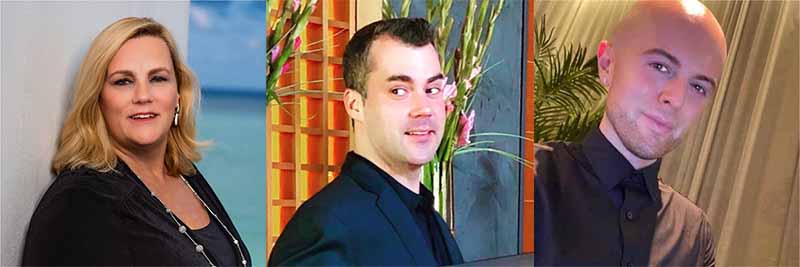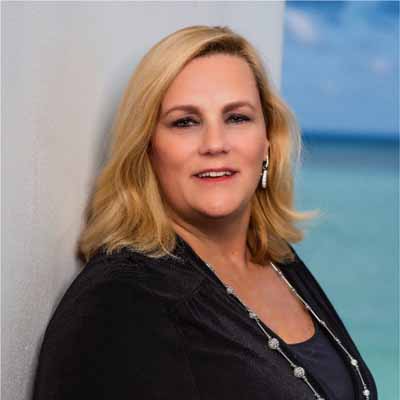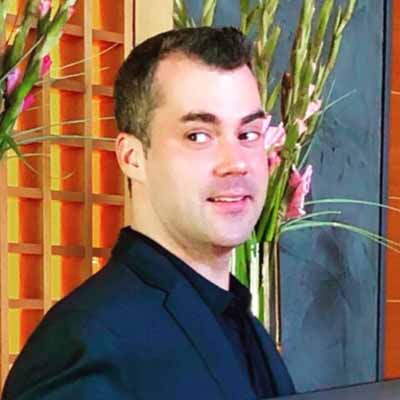
Three spa & wellness leaders talk about technology and where the industry is headed.
We asked industry experts how they envision the spa of the future, what role technology will play, and what it will take to succeed.
Overwhelmingly, they all said human contact will always be essential and the key element of spa & wellness, while technology will also play a key role.
Read on for more insights on what the future holds for spa & wellness.
 TAMMY PAHEL, VP of Spa & Wellness Operations, Carillon Miami Wellness Resort
TAMMY PAHEL, VP of Spa & Wellness Operations, Carillon Miami Wellness Resort
How do you envision the spa of the future?
I envision wellness that is interactive, educational, and offering customized. In 2022, the world at large is trying to incorporate wellness in their lives, but I wonder if the world actually understands what wellness really is. When people were asked what wellness was five years ago, the responses were always fitness related. Now, the average individual has evolved to understand that being “well” is more than fitness. If you consider the definition of “wellness,” it is the act of practicing “healthy habits” on a daily basis to attain better physical and mental health outcomes, so that instead of just surviving, you’re thriving. We will see wellness focused treatments designed to foster relaxation and alleviate specific health conditions, such as skin disorders, anxiety, stress, acne, eczema, back and shoulder pain, lymphatic congestion, and more. We will see more Integrative medicine, Chinese Medicine, sex therapy, strategic life coaches, energy medicine offering biofeedback, RIFE Therapy, and O3 Ozone Therapy.
Additionally, the spa of the future will offer more wellness retreats that educate and create life changing physical and emotional experiences. At Carillon Miami Wellness Resort, we are hosting a wellness retreat in late September entitled, Holistic Emotional Health Retreat: Staying Grounded. Staying Connected. Your Calm is Calling You Home.
What will change and what will stay the same?
In resort spas, we will see new technologies coupled with the healing touch of our traditional spa treatments. In fitness, we will continue to see new technologies to help people regain core strength and vitality. Also, there will be more wellness experiences offered in the room or suite. For example, fitness libraries found on each TV for guests to engage in fitness in their room or suite at a time that is convenient. At Carillon, we also offer Corc (sustainable and green yoga mats) in each room, which allows guests to participate in yoga comfortability and in private. Moving forward, more resorts and hotels will focus on air and water for travelers. Carillon’s In-Suite Wellness Program continues to be elevated, now offering Active Pure which filters air within 30 seconds, creating a space that is mold free, Covid fee, and pathogen free.
What role do you think technology will play?
Technology will continue to play a major role in spa facilities and wellness services. At Carillon, we offer Touchless Wellness Treatments, which are technology based experiences take guests to the next level and explore the future of wellness. We offer seventeen different touchless wellness experiences, which focus on sleep, detox, pain management, fat cell reduction, mental health, anxiety, stress, and inflammation. We are always looking for new modalities to enhance the health and wellbeing of our guests.
What will it take to succeed in this industry five years from now ? 10 years from now?
As we are facing fierce and continual disruption in the hospitality and wellness spa industry, we will need to provide wellness at many different levels. As travelers become more educated on wellness topics, we must provide authentic wellness experiences that can change lifestyles and behaviors.
 DANNY SILVA, Director of Spa, Beverly Wilshire, A Four Seasons Hotel
DANNY SILVA, Director of Spa, Beverly Wilshire, A Four Seasons Hotel
How do you envision the spa of the future?
The spa industry is rebounding well compared to pre pandemic business levels according to the recently released ISPA research. Post pandemic we see hotel and local guests looking for highly customized body and skincare services that combine high touch, the latest in technology with great product lines. Guests are also more open to touchless wellness technologies to compliment treatments with providers. As well as balancing traditional care with functional care and biohacking to live healthier lives that are vibrant and geared towards longevity.
What will change and what will stay the same?
People are always going to want hands on massage and facials regardless of technology.
What role do you think technology will play?
During the pandemic people who were working from home got used to not only doing business via the internet but were exposed to more than ever different types of fitness, yoga, meditation and mindfulness practices than ever before. Prior to joining Four Seasons, the previous brand I worked at had their #1 viewed internet wellness class be a sound bowl mediation that had over 15,000 views. Technology also gives us more access to tools and technologies, as well as what to do with results than ever before.
How is tech changing or elevating your spa right now?
We have enhanced the tools our body workers have access to beyond their hands with partners like Therabody. Percussion massage and compression boots for lymphatic drainage are available to guests poolside in a cabana or pre/post their massage/facial service or in the case of percussion massage during their body work session. We also incorporate localized cryotherapy treatments for reduction of pain and inflammation. In the spring, we partnered with LightStim to offer our guests full body LED Light table sessions using their FDA cleared LightStim Bed. LightStim delivers light energy in a similar way plants absorb light energy from the sun. LightStim LED Bed uses LED light therapy for a non-invasive, soothing and gentle treatment that sets in motion the body’s inherent pain-relieving process. LED light therapy is also known as red light therapy, low level light therapy (LLLT) or photobiomodulation. Relax, listen to music or meditate while enjoying this warm, soothing and restorative treatment.
What will it take to succeed in this industry five years from now ? 10 years from now?
Thinking outside of the box and looking for inspiration from other international spa and wellness markets. For example, functional health and diagnostics have been part of some of Europe’s leading wellness destinations since the 1990s but are now just catching on in the US. In the US, for most people, your “wellness” was dictated by what your traditional employer provided insurance covered, which isn’t very much from a testing and diagnostics standpoint. We have the ability to supplement that with not only functional health practitioners, but also advancements coming out of Silicon Valley. From wearable wellness trackers like WHOOP and OURA that allow you to make improvements in your fitness and sleep, to at home vitamin/mineral defiance tests and gut health tests from companies like Viome and Vessel. You can literally get the results on your phone and have them interpreted for you with actionable steps you can take to enhance your wellness.

SAL CAPIZZI, Director of Marketing & Host of The Spa Leader Masterclass Series, Book4Time
How do you envision the spa of the future?
I see lots of mindfulness treatments and practices coming. Living in New York City there is no other snap back to reality like coming out of an hour and a half long massage and walking outside back into a circus. I think practitioners will be providing more take-home care tools, no matter how simple, and offering more best practices on how to “keep the treatment going” even after a client leaves a spa.
What will change and what will stay the same?
I think the bread and butter of the spa and wellness industry is making a personal connection with your provider no matter the service. Most people want to come in and relax and we should never discredit the people who do visit spas and wellness centers as a “safe space” because they have made a personal connection with a provider that they feel comfortable with and who makes them feel like the best version of themself. So, I think human to human contact will stay the same.
At the same time, there will be changes in how people use spas and wellness centres and how people treat those experiences, extending them to become fuller, transformative wellness experiences
We’re already seeing change, for example, in how long people are staying at a spa or wellness center. Travel demand has skyrocketed since the end of the pandemic, and people are looking for half-day or full-day feel good experiences. It won’t be long until there is a 24-hour wellness excursion! We’re also seeing this with properties and resorts that have access-controlled areas. Guests typically know what they want and if they want to go have a cabana massage by the rooftop pool that only “platinum access” guests can visit they know that that is the package they will be purchasing for the day.
What role do you think technology will play?
Technology will play a huge role in creating contactless experiences, with booking, intake forms, check-in, checkout, and payments. Tech will also play a role in treatments and services, as standalones or adjunct offerings. This is an easy way to diversify revenue streams and increase profits. Guests will also have greater say in how they want to use technology and what sort of experience they want to have. They will be able to customize their experiences to incorporate both human contact and contactless elements.
I’m not going to say robots will be doing massages. However, I do see AI playing a part in collecting information upon guests’ arrival and post stay/service.
And most certainly VR classes will be offered in the future. Yoga classes are peaceful, but they are in the same classroom you have likely seen 10 times. Now imagine a guided class with relaxing visuals quite literally putting you in whatever individualized setting you would find the most relaxing and soulful. That’s where we’re going.
What will it take to succeed in this industry five years from now ? 10 years from now?
A willingness to learn, adapt, and grow with the flow of change, as well as the ability to spot the difference between a trend, a fad, and a true development. This is what it will take to succeed any number of years from now.




Amazing article Thanks for sharing
Love ❤️